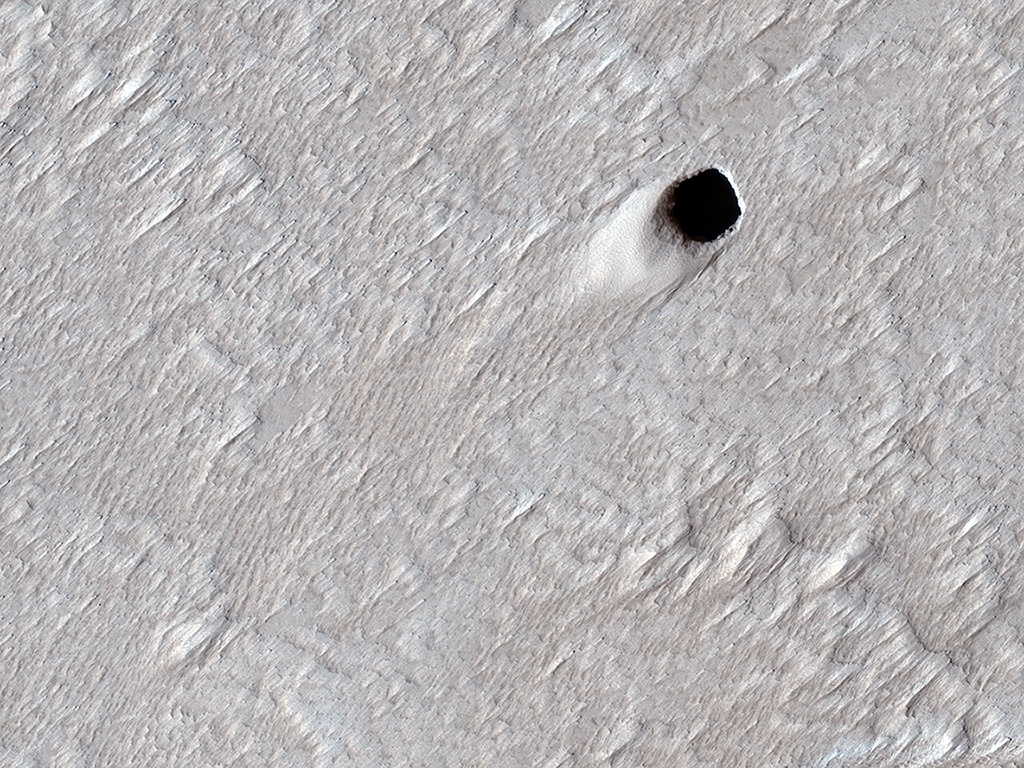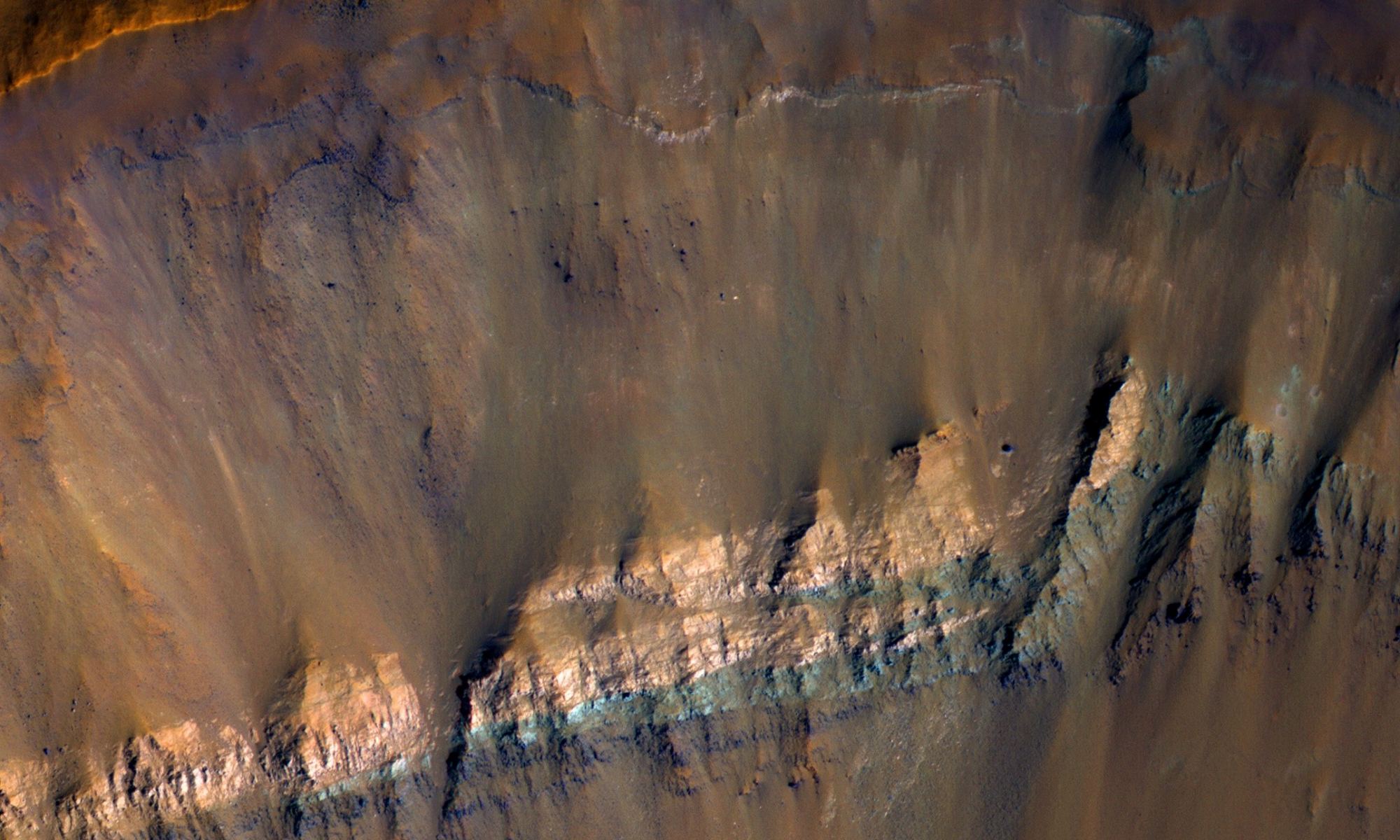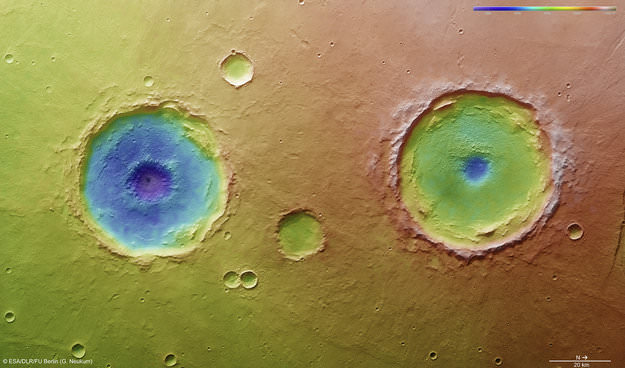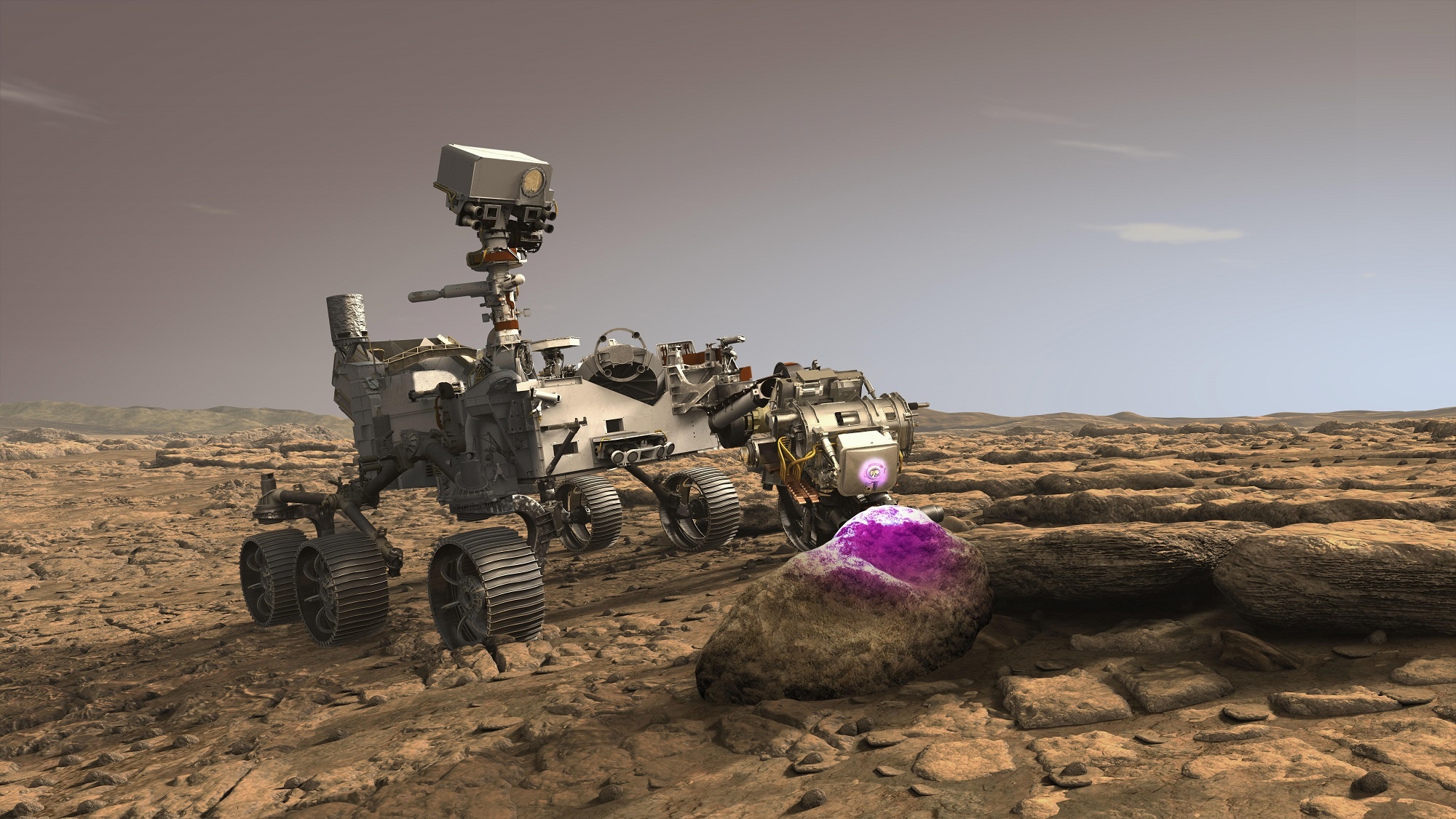Just like Earth, Mars undergoes seasonal changes due to its axial tilt. And while summer heat on Mars can’t compare with Earth’s, along with the Martian summer warmth comes an increase in small whirling storms known as dust devils.
Continue reading “Summer is Dust Devil Time on Mars”China’s Mars-bound Tianwen-1 Takes a Selfie
The CNSA (Chinese National Space Agency) has released an image of its Tianwen-1 spacecraft to coincide with the National Day and Mid-Autumn Festival. The spacecraft is on its way to Mars, and if the landing is successful, China will be only the third nation to successfully land a spacecraft on the planet.
Continue reading “China’s Mars-bound Tianwen-1 Takes a Selfie”This Martian Lava Tube Skylight is 50 Meters Across. The Biggest Lava Tube on Earth is Only 15 Meters Across

NASA’s Mariner 9 was the first spacecraft to orbit another planet when it reached Mars in late 1971. It got there only a few weeks before the Soviet Union’s Mars 2 and Mars 3 spacecraft, despite being launched 11 days later than those missions. Unfortunately, there was a major dust storm when Mariner 9 arrived, and NASA had to wait until January before the spacecraft could get good images.
When it did get those images, they revealed a surprise: volcanoes and lava flows cover large portions of the Martian surface.
Continue reading “This Martian Lava Tube Skylight is 50 Meters Across. The Biggest Lava Tube on Earth is Only 15 Meters Across”The Colorful Walls of an Exposed Impact Crater on Mars

Impact craters have been called the “poor geologists’ drill,” since they allow scientists to look beneath to the subsurface of a planet without actually digging down. It’s estimated that Mars has over 600,000 craters, so there’s plenty of opportunity to peer into the Red Planet’s strata – especially with the incredible HiRISE (High Resolution Imaging Science Experiment) camera on board the Mars Reconnaissance Orbiter which has been orbiting and studying Mars from above since 2006.
Continue reading “The Colorful Walls of an Exposed Impact Crater on Mars”Machine Learning Software is Now Doing the Exhausting Task of Counting Craters On Mars

Does the life of an astronomer or planetary scientists seem exciting?
Sitting in an observatory, sipping warm cocoa, with high-tech tools at your disposal as you work diligently, surfing along on the wavefront of human knowledge, surrounded by fine, bright people. Then one day—Eureka!—all your hard work and the work of your colleagues pays off, and you deliver to humanity a critical piece of knowledge. A chunk of knowledge that settles a scientific debate, or that ties a nice bow on a burgeoning theory, bringing it all together. Conferences…tenure…Nobel Prize?
Well, maybe in your first year of university you might imagine something like that. But science is work. And as we all know, not every minute of one’s working life is super-exciting and gratifying.
Sometimes it can be dull and repetitious.
Continue reading “Machine Learning Software is Now Doing the Exhausting Task of Counting Craters On Mars”Perseverance Will be Scanning Inside Rocks for Fossils on Mars
On February 18th, 2021, NASA’s Perseverance rover will reach Mars, make a harrowing descent through the planet’s atmosphere, and put down in the Jezero Crater. Like it’s sister-rover, Curiosity, this robotic explorer will explore a region that once supported flowing water and poke around with an advanced suite of scientific instruments for signs of microscopic life that may have existed there billions of years ago.
This is no small feat, which is why the rover will be bringing along its Planetary Instrument for X-ray Lithochemistry (PIXL). This precision instrument is located at the end of its 2-meter (7 foot) long arm and is powered by artificial intelligence (AI). The PIXL will play a pivotal role in Perseverance‘s mission, using a coring drill to obtain samples that will be cached on the surface that will be returned to Earth by a future mission.
Read moreChitin Could be the Perfect Building Material on Mars
It’s hard to deny that we’re heading for a future with a human presence on Mars. But to develop sustained presence, there are an enormous number of technical problems to be worked out. One of those problems concerns manufacturing and building.
We can’t send everything people will need to Mars. We’ll need some way to build structures, and tools and other things.
Continue reading “Chitin Could be the Perfect Building Material on Mars”The Surface of Mars Might Have Gotten an Acid Bath, Obscuring Evidence of Past Life
People have been speculating about the possibility of life on Mars for centuries. But it’s only since the 1970s and the Viking 1 and 2 missions that we have been able to search for it. After many decades, evidence has mounted that Mars may have once supported life (like the existence of flowing water and organic molecules), but evidence of present-day life has remained elusive.
Unfortunately, according to a recent study by an international team of scientists led by the Spanish Astrobiology Center (CSIC-INTA), it’s possible that the surface of Mars was bathed in acid and alkaline fluids that destroyed all evidence of past life. These findings could have serious implications for upcoming missions to Mars, which includes NASA’s Perseverance and the ESA’s Rosalind Franklin rover.
Continue reading “The Surface of Mars Might Have Gotten an Acid Bath, Obscuring Evidence of Past Life”Can you tell the difference between California, Venus, Titan and Mars? Hint: California is the one with buildings.
Californians woke up to an alien-looking sky this morning, Wednesday, September 9, 2020.
Continue reading “Can you tell the difference between California, Venus, Titan and Mars? Hint: California is the one with buildings.”It Rained So Hard on Ancient Mars that Craters Filled Up and Overflowed

Figuring out the ancient climate on Mars has been tricky. While evidence gathered from orbit and on the surface seems to indicate there must have been a lot more water on Mars early in its history, questions remain on how much water and in what form.
A new study has now quantified the amount of precipitation needed to create many of the landforms visible today on Mars surface. The paper, published in the journal Geology says there was enough rainfall and snowmelt to fill lakebeds and river valleys 3.5 to 4 billion years ago on the Red Planet, and that precip must have occurred worldwide.
Continue reading “It Rained So Hard on Ancient Mars that Craters Filled Up and Overflowed”





